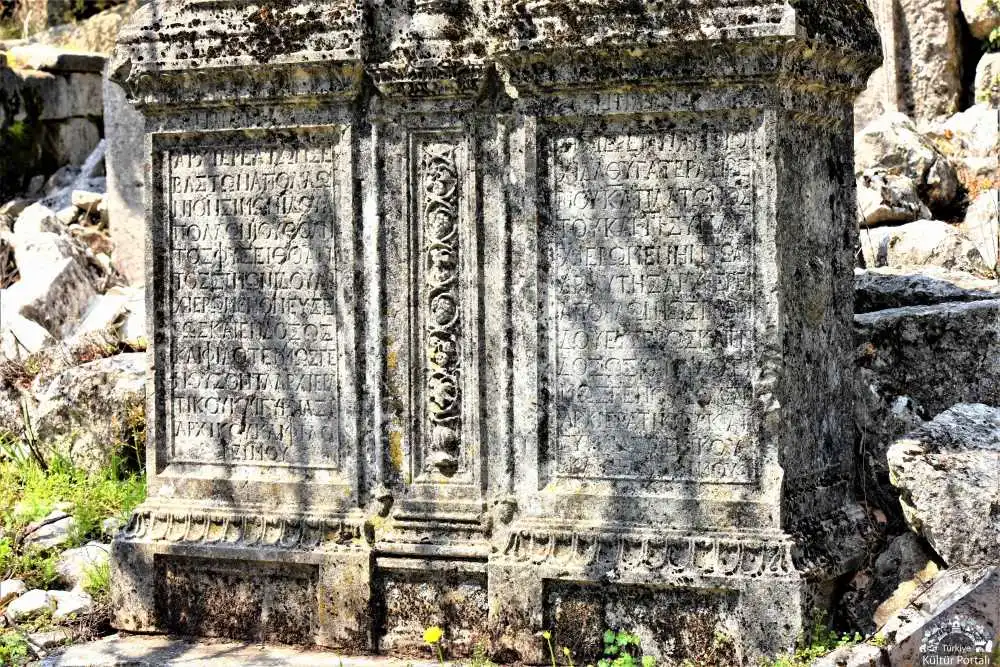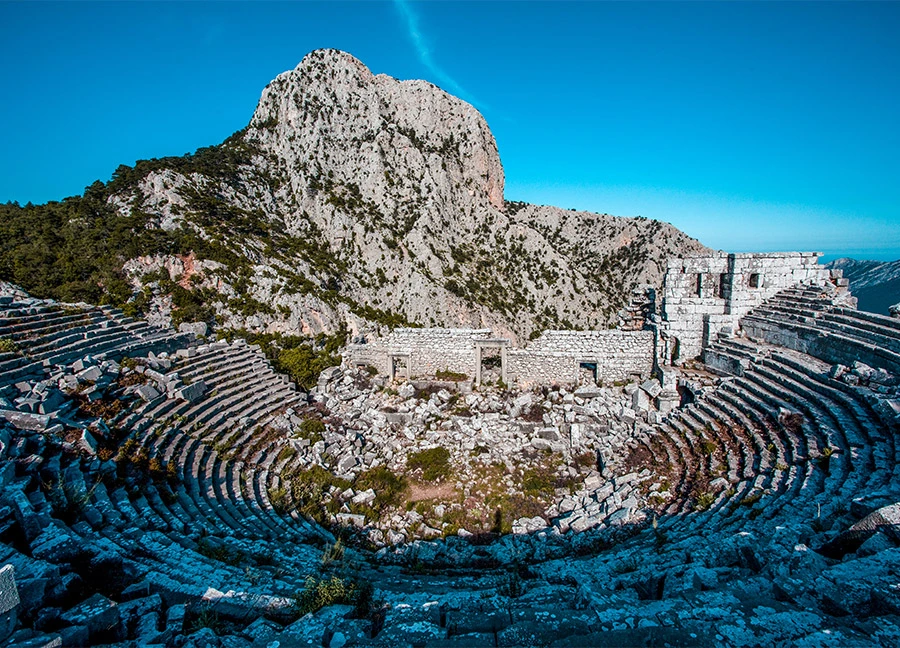Termessos Ancient City
Description
Termessos is an important ancient city founded by the Solyms, descendants of the Luwians, one of the oldest peoples of Anatolia, in the valley between the peaks of Mount Solymos, which today bears the name "Güllük". In the pages of history; Alexander the Great besieged the city in 333 BC and the Termessians did not surrender the city by making a strong defense.
The ancient city is one of the most striking of the ruins protected in the forest and is located in the national park of the same name. The Gulluk Mountain (Termessos) National Park is a botanical and open zoo with rich vegetation and wildlife, including endangered species.
The ruins of the city start from the Hellenistic city wall near Yenicekahve on the Antalya-Korkuteli highway and continue to the top of Güllük Mountain. If you follow the road up to the city after the parking lot, you will see the steps and the monumental entrance of the Ionian Temple built during the reign of Emperor Hadrian on the right. Climbing further to the south, in the area of the lower city walls and the water bay, you will come to the gymnasium on the left, the first floor of which is partially preserved. To the southwest of the building, which consists of many rooms and halls, is a colonnaded street with shops behind it. In addition to the canals, which show the perfection of the sewage system, important structures of the period such as the theater, the baths, the agora, the assembly building, many tombs, many cisterns, the founder's house, the temple can still be seen.
Termessos has many temples and very large cemeteries. The variety and ornamentation of the tombs are quite rich. The tomb of Alketas (319 B.C.), one of the most important commanders of the Alexander the Great period, and others are also important in terms of shedding light on the history of the city.
The most interesting artifact from Termessos in the Antalya Museum is the Dog Sarcophagus exhibited in the Sarcophagi Hall. The poetic inscription written by its owner Rhodope to the dog named Stefanos is unique and of special importance.
Short Description
Termessos is an important ancient city founded by the Solyms, descendants of the Luwians, one of the oldest peoples of Anatolia, in the valley between the peaks of Mount Solymos, which today bears the name "Güllük". In the pages of history; Alexander the Great besieged the city in 333 BC and the Termessians did not surrender the city by making a strong defense.
The ancient city is one of the most striking of the ruins protected in the forest and is located in the national park of the same name. The Gulluk Mountain (Termessos) National Park is a botanical and open zoo with rich vegetation and wildlife, including endangered species.
The ruins of the city start from the Hellenistic city wall near Yenicekahve on the Antalya-Korkuteli highway and continue to the top of Güllük Mountain. If you follow the road up to the city after the parking lot, you will see the steps and the monumental entrance of the Ionian Temple built during the reign of Emperor Hadrian on the right. Climbing further to the south, in the area of the lower city walls and the water bay, you will come to the gymnasium on the left, the first floor of which is partially preserved. To the southwest of the building, which consists of many rooms and halls, is a colonnaded street with shops behind it. In addition to the canals, which show the perfection of the sewage system, important structures of the period such as the theater, the baths, the agora, the assembly building, many tombs, many cisterns, the founder's house, the temple can still be seen.






